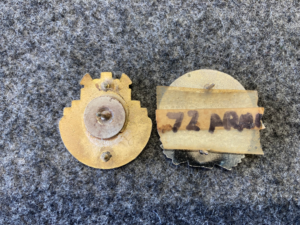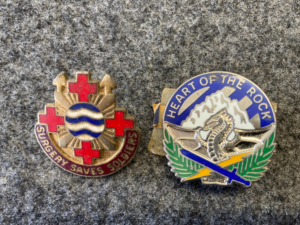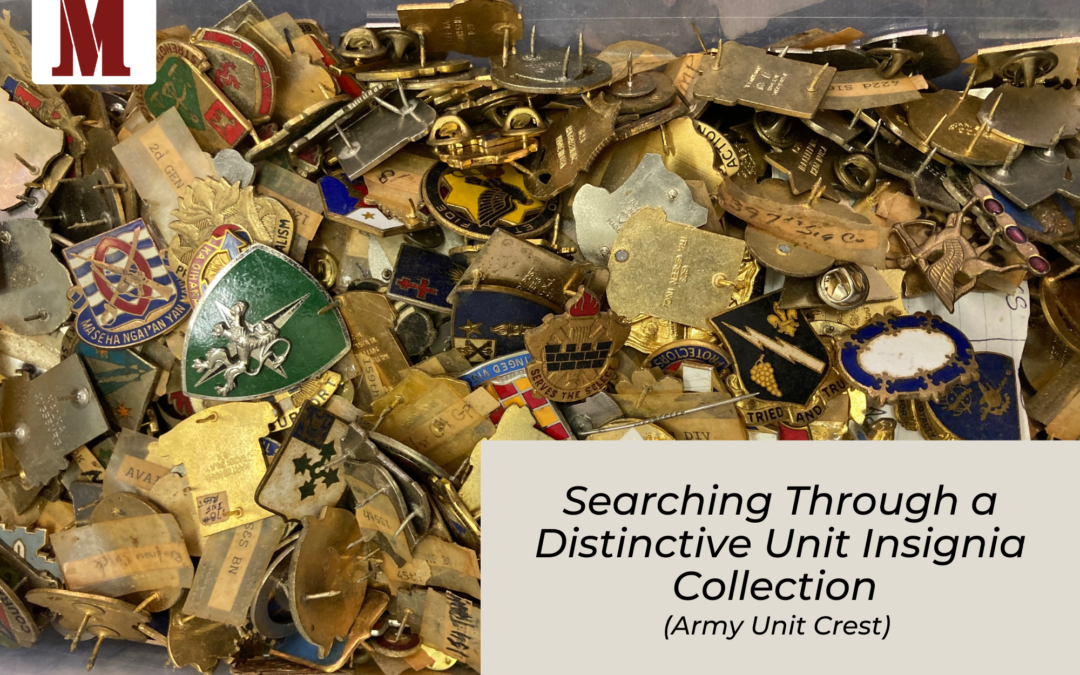This month I would like to discuss U.S. Army Metal Insignia more specifically a small enamel pin officially called Distinctive Unit Insignia (DUI) also unofficially called unit crests. Introduced in the 1930’s when most Soldiers were issued three. Two for the lapels of the coat and one for the Campaign Hat. When WWII began the DUI was dropped as there were soon to be millions of Soldiers in the Army and the cost to furnish each Soldier with three of these pins was thought to be cost prohibitive. I do not know the cost to the Army but it must have been substantial. The first DUIs produced were made with screw back fasteners as one can see in the 118 QM BN example. Sometime later they started to be produced with pin back fasteners as seen on the 32nd Infantry example. Later, I believe these types of fasteners were zed simultaneously. In 1943, the clutch back fastener system as used on the 14th Infantry example were adopted for most of the US Army metal insignia. As the Army expanded, some Soldiers were issued DUIs as they were serving in units that had pre-war stocks. Many of the newly created units did not have these colorful Espirit de Corps items to wear on their uniforms and they were envious of the Soldiers that had them. At the conclusion of WWII, some industrious Soldiers were determined to produce their own examples. These “unofficial” examples were never approved by the US Army Department of Heraldry and these units were soon disbanded. Most of these unofficial types were produced in England, France, Italy and Germany; some by the same companies that once produced metal insignia for the now defunct Axis Armies. Many of the pins commemorate famous WWII events like the seizure of the bridge at Remagen. Later DUIs were produced in Occupied Japan and Korea. These foreign made examples are now highly collectable. In the 1950’s, the Army returned to mass production of DUIs for Active Army, Reserve and National Guard units. There are thousands of examples out there. Unfortunately, there is no definitive reference book available to help in their identification. It is very difficult to sell items if you cannot identify them.
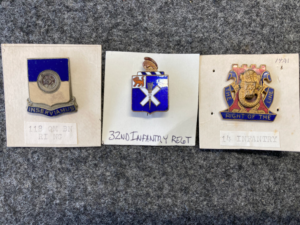
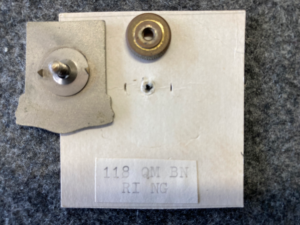
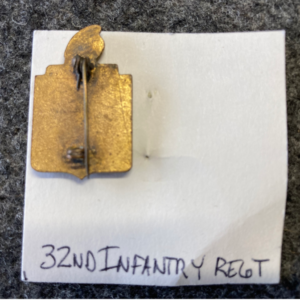
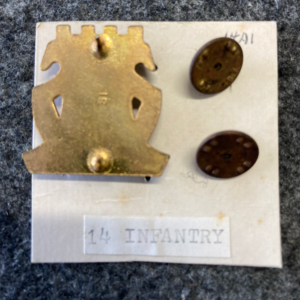
Identifying the Distinctive Unit Insignia
When I started my business, I had little desire to deal in DUIs. One day, I was contacted by a man that had inherited his father’s DUI collection and wanted to sell it. I met him somewhere in North Texas where all 800+ were pinned to a large 4’X8′ board. I quickly made a deal where I paid roughly $2.00 each for the collection. That night in the hotel room, the wife and I took the DUIs off the board and placed them in smaller containers. My education started when I returned to my shop and started the process of selling this collection. Pictured below is a large portion of the collection that I have been unable to sell.
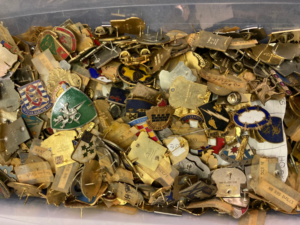
The two DUIs pictured below illustrate some of the problems I encountered. First, I was unable to discover what Medical unit the DUI represent, secondly the DUI is damaged and is missing both of the original pins for the clutch back fasteners and has had a thumbtack glued to the back where it was attached to the board. The second example is of a post 1943 Armor unit and was one of the few that was identified on the back. All of these DUIs had a heavy coat of dirt and nicotine that had damaged their enameled finish. The valuable DUIs are early clutch back and pin back examples, followed by the unofficial foreign made ones. This collection had very few valuable examples and the way there were mounted on the board made it difficult to determine their condition. Next time I will share how I applied the lessons learned from this mistake.
